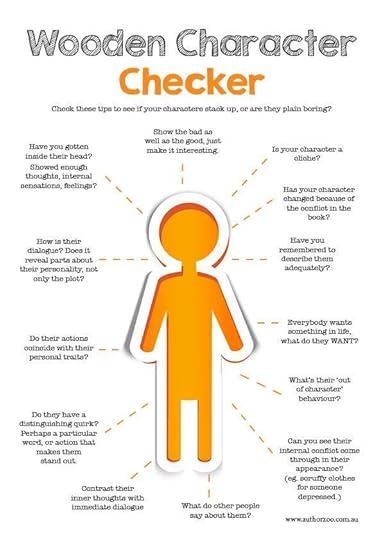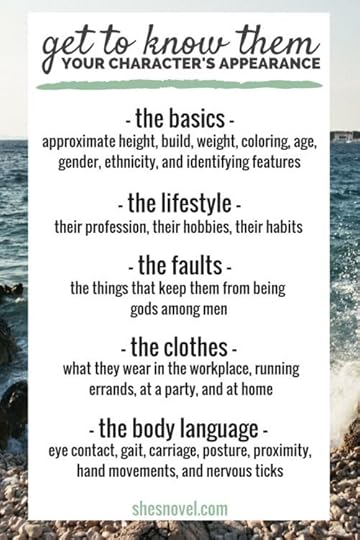Peter Lopez Jr.'s Blog: Xulon Press Blog , page 35
September 9, 2016
Well Looky Here! 75 Different Synonyms for the Word “Look”
It’s easy to find yourself stuck when writing—you want to add color, depth and description to your writing, but that requires, well, you know, words. Sometimes those words are hard to conjure up!
We definitely get it. To help you you out, here’s 75 different synonyms to use instead of the word “looked.” (A word which can be used a few different ways, so for good measure we’ve given you a little bit of everything).
So throw those watered-down verbs out the window, and start plugging these synonyms for “looked” into your writing today!

The post Well Looky Here! 75 Different Synonyms for the Word “Look” appeared first on Xulon Press, Christian Self Publishing.
September 7, 2016
3 Writing Prompts for Fiction Writers
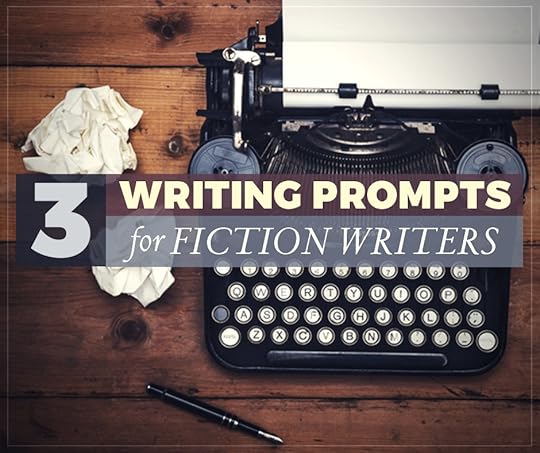
Let’s face it; sometimes we just don’t know the first word to type. That’s fine if you’re a mathematician, but as a writer, words are as necessary as air to breathe. Instead of fuming at your desk, staring at a cursor that’s mocking you with every blink, try your hand at one of these fiction writing prompts to get your creative juices flowing. Feel free to tell us how your story ended in the comments below!
1.) Write a scene using only dialogue, and start with the line, “He was just here two minutes ago!”
2.) Paint the picture of a quiet place—a tranquil garden, an old, abandoned house, or a desolate city whose occupants have fled—using no dialogue, only descriptions. What do you smell? See? What do you hear, or what are you hoping to hear?
3.) A little girl takes her place in the center of a stage illuminated by dozens of lights, and flanked by royal blue curtains. Her wispy brown hair has been curled and pulled back properly to the sides; her shoes meticulously polished for the occasion. She never would have imagined that she’d be here, but now a vast audience of grown adults are seated in the auditorium in front of her, waiting with great anticipation. She takes a deep breath, steps forward, and…
The post 3 Writing Prompts for Fiction Writers appeared first on Xulon Press, Christian Self Publishing.
August 31, 2016
Said Is Dead: 141 Words to Use Instead of “Said”
You are doing everything possible to make your writing better, tighter, and more interesting, but are you still using “dead words?” These are words that are simply just too plain, bland, and vague to be included in your awesome writing, and one of the most notorious “dead words” is “said.” But dialogue is important! I hear you. It is also important to show readers exactly how something is said. Think, what emotion is behind this dialogue? What picture do I want to paint? To help you get started, we have compiled a list of alternatives to the dreaded “said.” With this list, you are sure to find a perfect fit for every “said” in your writing.
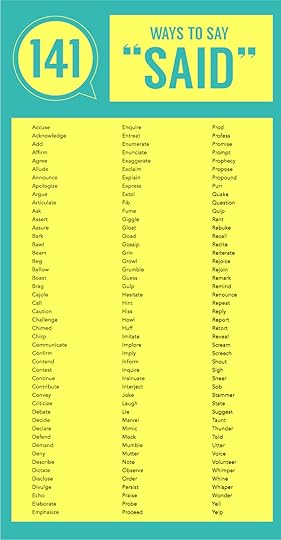
The post Said Is Dead: 141 Words to Use Instead of “Said” appeared first on Xulon Press, Christian Self Publishing.
August 1, 2016
5 Twitter Hashtags Every Writer Is Using Right Now
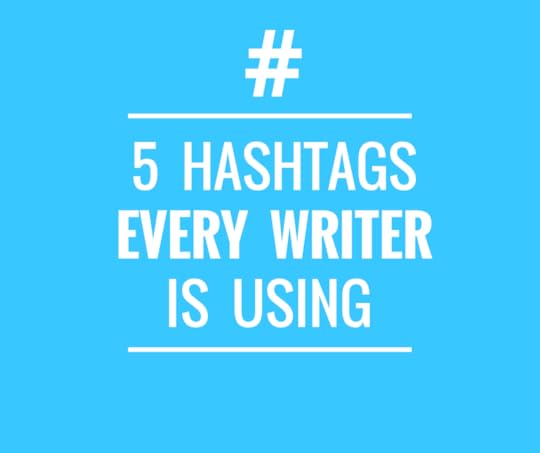
If you haven’t hopped on Twitter yet, you are seriously missing out on some wonderful connections in the online writing community. The key to successfully benefitting from Twitter is engagement, and hashtags make finding your tribe even easier—if you know where to look! Here are five trending hashtags to help you get inspired, find writing tips, and connect with readers and other authors.
1.) #WritingTip or #Writetip
This is pretty self-explanatory, but there are some real gems under this tag. Writers are using this to share everything from inspirational quotes to practical advice about evolving and refining their craft.
2.) Hashtag Your Genre
Don’t forget to hashtag your genre to stay with current trends, topics, and connect with those who love to read the same books you do. There is something for everyone, including #ChristianBooks, #SciFiChat, #MemoirChat, and #YA (young adult).
3.) #WritingParty
Writers are using this hashtag to talk about all kinds of industry issues and to share their own current projects. This is a great one to follow to find general advice, updates on works in progress, and questions about common concerns.
4.) #MustRead
Obviously, writers are using this hashtag because it leads you straight to what other people are reading. You’ll discover what kinds of classics are trending, and how other people are promoting their own new work.
5.) #ACFW (American Christian Fiction Writers)
If you’re a Christian fiction writer, this is your jam. Use it to see what other Christian fiction authors are up to and the current trends and concerns. This hashtag is used to give encouragement, pose meaningful questions, and build a network of support among authors.
These five hashtags will give you a great place to start using Twitter to its fullest potential. Writing is often a solitary craft, but that doesn’t mean you can’t take advantage of online writing communities and all they have to offer. Start using these hastags and start connecting with the authors and readers around you!
The post 5 Twitter Hashtags Every Writer Is Using Right Now appeared first on Xulon Press, Christian Self Publishing.
July 22, 2016
15 Things Every Writer Needs On Their Desk
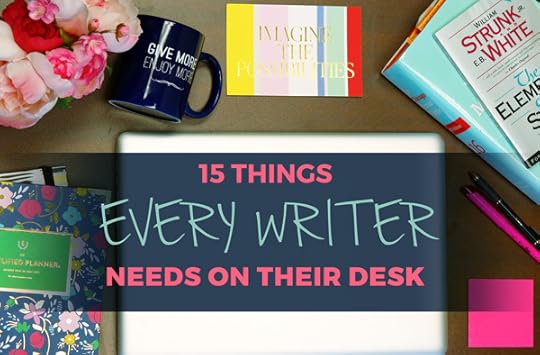
Painters need a canvas, paint, paintbrushes, and a rolling landscape begging to be painted. Musicians need an instrument, quarter notes on sheet music, and an audience to play for. What do writers need to create their artistic medium of choice?
Obviously, a writer needs paper, pen, and an idea. We know it’s not that simple though, right? Writers need inspiration—but how you go about tracking down and bottling that inspiration is different for everyone. Some writers are basic; they need a dictionary and thesaurus for unsticking their brain, and that’s it. Other writers need a desk with a window view, and lots of coffee. Here’s our editors must-haves for creating the ultimate writing environment!
1.) Dictionary and thesaurus
These two resources are beneficial when the word you want is on the tip of your tongue but you just can’t figure it out, or you need to check the correct usage of affect vs. effect—again.
2.) Live plants or fresh flowers
Plants not only help improve indoor air quality, but they can also help decrease stress and increase productivity. If you’re not the green thumb type, try picking up a fresh bouquet from the grocery store. Worst case, you’ll have some pretty flowers on your desk.
3.) Chicago Manual of Style
Considered the industry standard in the book world, the Chicago Manual of Style is one of the best resources for a writer. Not only does it contain all the writing rules you ignored in high school, but it also provides everything you need to know about quoting sources, producing a bibliography and what to expect during the production of a book.
4.) Notebook and favorite writing utensils
You’re going to need empty pages to write down all those brilliant ideas your book isn’t ready for yet. Use a scratch pad or notebook to record a thought or idea you’ll need for a later scene, to draw scenes or characters, or just to doodle when you find yourself stuck.
5.) Elements of Style
This book is a great, pocket-sized reference of all things writing and grammar. It’s a lot less intimidating than the Chicago Manual of Style and you’ll find this quick reference guide is chock full of knowledge.
6.) USB coffee mug warmer
There is nothing worse than taking a sip of coffee you thought would be hot, but is now cold. These amazing USB warmers plug right into your computer and keep your coffee or tea warm until the last drop. Then it’s time to brew more!
7.) Your favorite mug to sit atop your warmer
We all have that favorite coffee mug, right? Maybe it has a funny quote, or you bought it on the best-vacation-ever, or it’s the cat-shaped cup your best friend gave you—your writing desk needs a coffee mug that makes you feel good.
8.) Inspirational photos or quotes
Most of the writers I know can’t write in a closet-of-a-room with bare walls. So add a sign over your computer that says, “Write” in a beautiful font, or print out gorgeous garden photos from Pinterest; either way, find inspirational photos and quotes that lend to your creative vibe.
9.) Desk lamp with daylight bulbs
Good lighting, and the right light bulb, will change your writing process. We love daylight bulbs because they light the room as if the sun is shining through a window.
10.) Goal board for your book
Memo boards are still cool for writers, we promise. Stick your outline up there, along with the main theme of your book. If you’re writing fiction, use it as a place to collect images of what your characters might look like or images of your book’s setting.
11.) Glass of water
It’s not just for athletes. Hydration is always key, no matter what.
12.) Essential oil diffuser and a few essential oils that aid the writing process
Scents can trigger memories. Scent can alter our mood by decreasing stress, or lending to productivity. If you’re feeling uninspired or sleepy, citrus scents are great. Lavender helps with stress, which may come in handy during those tense self-editing moments. Keep a diffuser nearby and add a few drops of your favorite essential oils when you need a boost.
13.) Daily planner
Keep track of your writing schedule and progress in one place. If you write a couple days a week, record your word count at the end of each writing session; you’ll see just how much progress you’re making.
14.) A few of your favorite books
Keep some of your favorite or prettiest books close. The more inspiration you can work into your writing space, the more places you give your eyes to wander and your mind to drift when it’s trying to work out a detail of your book.
15.) Metaphorical trophies
Every writer has a run-in with self-doubt; keep something close that will remind you just how awesome you are, whether it’s a diploma, a medal from a marathon you ran, or a picture of your fully-grown, self-functioning children. You’ve already accomplished great things—writing a book is going to be the next one!
Sources:
http://earth911.com/work/5-reasons-to-have-a-plant-at-your-desk/
The post 15 Things Every Writer Needs On Their Desk appeared first on Xulon Press, Christian Self Publishing.
July 21, 2016
Author Inspiration: Writing Prompts for Autobiographies and Memoirs

Jump-starting the writing process can be difficult sometimes, which is why writing prompts are so popular. They give spark to the imagination, and provide the starting point to a story road map that only you, the author, can finish drawing out. But did you know that writing exercises can help by providing a jumping off point? Whether you simply use them to get your creative juices going, or the prompt triggers a memory which would serve as a perfect beginning, a little help with your writing topics might be just what the doctor ordered! Check out the prompts below, and then get writing!
(P.S. Feel free to share you a few thoughts on where this writing prompt led you in the comments below!)
Writing Prompt for Biographies
“She was a rebel among her peers, refusing to follow society’s rules of how women should be. When someone told her she couldn’t do something, she’d laugh with her cavalier spirit and prove that person wrong by doing what others thought she couldn’t. She wore her hair short before it was fashionable, shocked others by wearing pants instead of dresses and spoke her mind, as other women meekly watched in wonder. To them, she was Louise, but to me, she was….”
Writing Prompts for Autobiographies
1.) “I sat with my toes exposed, leaning back as I sighed with relief. Relaxing on my front porch has been, and will always be, my little sanctuary. Whether it’s the sling-back Adirondack chairs, the way the trees send the right amount of cool air through, or how every spot on the porch holds a perfect view of the lake, it never gets old being here. It is my home, but for how long, I don’t know…”
2.) “‘Wake up!’ The man’s shouting woke me up from a lackluster sleep in my darkened quarters. I raised my head up to see who woke me up, only to see a gruff-looking guard staring menacingly at me through the bars. ‘You have a visitor,’ he flippantly proclaimed. Getting up quickly with anticipation, I hoped it was my lawyer to tell me this whole ordeal would be over and I could get back to my family. Yet, the one I saw at the visitor’s table was the last person I thought I would see, and truly, the one I needed the most…”
The post Author Inspiration: Writing Prompts for Autobiographies and Memoirs appeared first on Xulon Press, Christian Self Publishing.
July 12, 2016
The Newest App for Readers and Authors: The Litsy App!
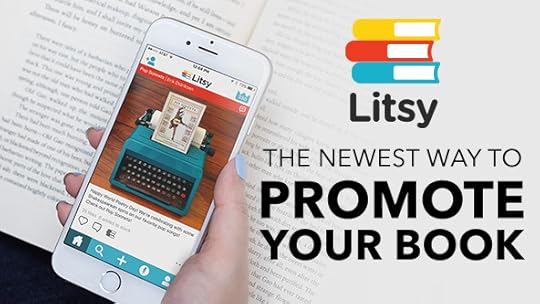
What’s the latest buzz amongst readers and writers alike? The Litsy app! Readers use it to find recommendations on the best books to add to their Amazon carts; writers and publishers can use it to connect with fans and each other. Publisher’s Weekly calls it “Instagram for books”, and BookRiot says it’s like “Instagram and GoodReads had a perfect baby.”
Of course, we had to find out why it’s one of the fastest-growing literary apps around (and what that could mean for our authors) so Xulon Press sat down with one of the app’s creators, Todd Lawton, to chat about connection, modern-day publishing, and how today’s readers are discovering the best books to read.
BN: Thanks so much for chatting with us! Your app is creating quite the stir amongst readers and publishers, and it’s only been out a couple of months. So what is Litsy all about?
TL: Litsy is all about making reading fun and memorable again. The second best thing about reading a good book is having a good conversation about it! However, we’re not always around people to have those conversations, so we wanted to make a digital platform that adds even more fun and personality to the conversation.
BN: Yeah! I’m a big reader, so I get it. It’s nice also to be able to chat with people whom you would not normally meet, but who you know shares your love for books. You’ve already got one thing in common with them.
TL: Yes, and I would add one more thing to that: we focus on the moments readers have with books; it’s not about reviews. The way that Litsy is set up, it’s visual and verbal, and we incorporated fun elements like emojis, all these things lead to a really positive community where people are there to share the joy of reading—not necessarily be critics.
BN: That’s definitely what makes it fun to use: the visual elements, and the fact that I don’t have to be a critic or a literary expert to use it. So we know that you also own Out of Print, a clothing and merchandise company that creates cool book-themed products. From your vantage point in the industry, what important publishing trends are you seeing? And how does Litsy fit into those trends?
TL: One trend that we’re seeing is that printed books are not dead. They’re actually doing well, and we’re seeing booksellers who are on the platform that who can create the experience and have a nice dialogue with their fans and customers, they’re able to thrive in the current environment. We’re also seeing that the younger generation is reading a lot, and they’re very vocal about it, and they’re very broad in their interests. It’s great to see, because that hasn’t always been the case with younger generations, but this millennial group is really showing that they’re passionate readers.
Readers really do want to share that joy of reading. Out of Print focused on sharing books through fashionable shirts and tote bags with iconic imagery from books, and our experience was that bookworms out there wanted new ways to talk about their favorite books. We feel fortunate to be doing what we’re doing when we’re doing it, because it really is an exciting time for the publishing world and books.
BN: Absolutely! We would definitely agree with that here; we can see the same things as far as print and the millennial generation goes, and that readers are constantly seeking new ways to interact with books and each other. As far as authors go, what advice would you give to authors on how to use Litsy?
TL: I think the most effective way for an author to connect with readers on Litsy is to look at it as a platform for readers. By having a genuine sharing of an interest in all books, readers will connect with you on a deeper level, and that sets the perfect basis to be more promotional with their material or when there’s a big announcement. This is where readers of all different backgrounds comes to be just that—readers—so whether you’re a celebrity or an author or a publisher, the conversations are all based around books. The books are the common elements that connect all these people.
Litsy is available now for iOS users, with web and Android versions to be launched in the coming months. Check your app store for Litsy today to find the best books to read and start chatting with other book lovers!
The post The Newest App for Readers and Authors: The Litsy App! appeared first on Xulon Press, Christian Self Publishing.
July 11, 2016
Gather Ye Rosebuds: What Stubborn Weeds and Good Writing Have in Common
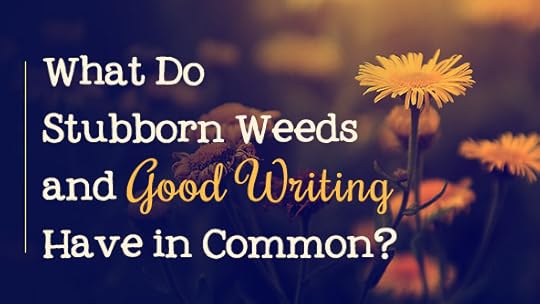
Many authors believe that only bad writers need editing and revision. I can assure you, that idea is false. Every author needs editing; savvy writers actually get it. Here’s why:
The process of writing is quite a bit like having a big backyard. I can plant beautiful, bountiful blooms. I can water them. I can watch with delight as those seedlings break ground into grand, gorgeous displays.
But around those blooming plants leaves will fall from the trees above. Naughty weeds will sprout in and try to camouflage themselves as if they belong amongst my flowers. Birds will drop twigs, rabbits will gnaw, and insects will plague those shooting bulbs from the moment they finally start to bear the fruit of my efforts.
This is where editing and revision come in.
Editing is gardening. Weeding. Cleaning. Shaping. Fertilizing. Trimming. Nurturing. Protecting. Manicuring.
Just plain ol’ showing off.
Everyone who owns a garden must weed it and feed it and help it grow; from a lone tree planted on an inner-city apartment balcony, to the lawn of Central Park, to the lush topiaries and botanicals of the Palace of Versailles. However simple or grand, they all have gardening in common.
Write the same way you grow a garden. Plant your thoughts like seeds, and watch them grow.
Write the first chapter without self-editing. Just write. Simply plant seeds for 30 minutes every day, until it’s done. When you’re finished, don’t keep poking and peeking at the seeds; set the first chapter aside while you move on. After the last chapter is finished, then go back to reread and revise that first chapter. You’ll probably find that your overall focus and message is much sharper. Cut and trim, add and fill in as necessary.
Repeat chapter by chapter. Till the ground, plant the seeds, water and fertilize the ground.
Once your story is written; it’s time to garden.
You’re probably going to need help with this one. Especially if you want something really magnificent. Disney doesn’t hire a standard homeowner to craft it’s trees into exact replicas of their uber-recognizable characters; they hire a landscape architect. The level of attention you give to this phase—the revision and editing phase—will determine the level of beauty and craftsmanship in the final product.
You have a story to tell, but you alone carry the seeds. Without your attention and effort, those seeds will go unplanted, unseen and will never wow an audience with their dazzling display. But once they’ve begun to bloom, remember: editing and revision are the tools that make it truly beautiful.
The post Gather Ye Rosebuds: What Stubborn Weeds and Good Writing Have in Common appeared first on Xulon Press, Christian Self Publishing.
June 29, 2016
5 Infographics Every Writer Should See—The Fiction Edition!
 Writing fictional narratives is tricky business; you are building entire people from scratch, and sometimes even entire worlds or universes. Time, sensory details, emotions, and plot all have to work together and seem effortless—even though writing it that way is anything but. When it comes to writing fiction, everyone can use a little help sometimes.
Writing fictional narratives is tricky business; you are building entire people from scratch, and sometimes even entire worlds or universes. Time, sensory details, emotions, and plot all have to work together and seem effortless—even though writing it that way is anything but. When it comes to writing fiction, everyone can use a little help sometimes.
We have already covered some infographics all writers should see, but what about all of you fiction and narrative writers out there? Are you looking for writing tools to show you how to write a story? If you need to pull your characters into focus, refine your plot, or create conflict, these infographics were chosen just for you!
1.) How to Tell a Great Story, Visualized
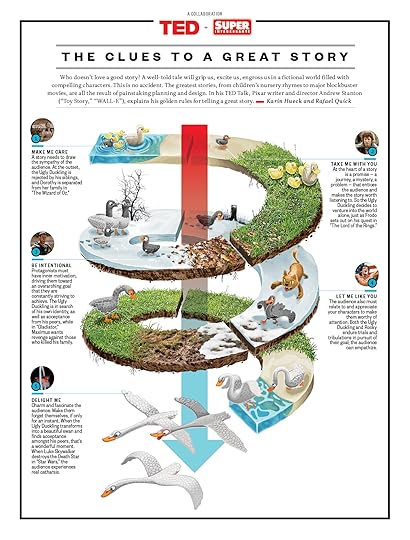
This is basically a two-for-one, since the infographic comes with a wonderful article about the structure of a successful and satisfying story—straight from Andrew Stanton who is the writer and director behind Toy Story and Wall-E. Karin Hueck and Rael Quick illustrated his advice for the magazine Superinteressante.
2.) The Eight Laws of Foreshadowing
When writing a narrative, building suspense and weaving in those loose ends is crucial. Foreshadowing often leads readers to an “aha” moment, which adds another dimension to the story. Use this foreshadowing infographic to show you how to write a story in a way that brings maximum punch to your plot.
3.) Wooden Character Checker
We learn in elementary school that an effective character needs lots of description: physical, emotional, spiritual, and philosophical. If only it was as easy as it sounds. This is a super handy printable to check if you are writing “wooden” characters, or if you have successfully crafted believable, relatable, people who live in your story.
4.) Get to Know Your People
Similar to the last infographic, but just a little more shallow. Once you’ve figured out who your characters are, make sure their outside corresponds with their inside! Use this handy checklist to make sure you’ve got it all covered.
5.) Give the People What They Want: Drama

No matter how beautifully written your story is, you need conflict to keep your reader’s attention. Struggling with the best ways to interject conflict into your fiction plot line? Here’s seven easy suggestions!
No doubt, writing plots and characters can be an exercise in creative exhaustion. Hopefully these snippets of information will alleviate some of that hesitation the next time you sit down to write, and give you a little more direction on how to write a story. Don’t forget to check out our last post with five infographics that all writers need to see and keep all of them in your writer’s toolbox. See an infographic above that you love? Found another resource for fiction writing that you love? Let us know in the comments below!
The post 5 Infographics Every Writer Should See—The Fiction Edition! appeared first on Xulon Press, Christian Self Publishing.
June 27, 2016
The Best Books to Read for Summer 2016

Do you know what’s synonymous with summer vacation? Summer reading. No, not the boring list you received from your high school English teacher that you needed to complete before returning to school in September. I’m talking about no-obligation, fun, summer books that are meant to be enjoyed by a pool, on the beach, or in a cabin tucked high in the mountains. If the community pool is your summer refuge, have no worries. The best books to read for summer 2016 are here, and they can transport you to any vacation locale your heart desires! So, what makes a great summer read in 2016?
Four of the Best Summer Reads—And What Makes Them Great
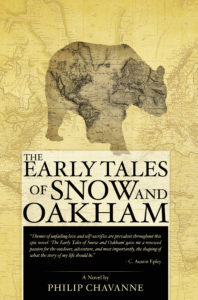 1.) Location serves as additional character. The best summer read should have a well-defined location, which also serves as a “character” in the book. From the permeating smells of the city to the thick, humid, salty air of the beach; location adds depth and a bold robustness to any good book. Hands down, The Early Tales of Snow and Oakham hits the nail on the head when it comes to location as an additional character.
1.) Location serves as additional character. The best summer read should have a well-defined location, which also serves as a “character” in the book. From the permeating smells of the city to the thick, humid, salty air of the beach; location adds depth and a bold robustness to any good book. Hands down, The Early Tales of Snow and Oakham hits the nail on the head when it comes to location as an additional character.
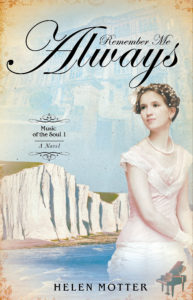
2.) Transports you. You should feel transported somewhere outside your literal surroundings as you turn the pages of your summer read. A lot of this has to do with a well-executed location, but strong, well-built characters are so important too. A great summer read should leave you wondering, even for a few moments, where you are when you set the book down. Nothing transports you more than a book set in 1911, which is exactly where Helen Motter takes her readers in Remember Me Always.
 3.) Strong plot. The most important aspect of any good book is the plot and point of the book. A book with a forward moving plot line, and a story arc with a steady build to the climactic scene in which the protagonist must grow or learn from, makes the best summer read. The second novel in the series by Helen Motter, Let Secrets Lie, has such a strong plot you won’t lose your place in the narrative if you have to step away for something as necessary as sleeping or eating.
3.) Strong plot. The most important aspect of any good book is the plot and point of the book. A book with a forward moving plot line, and a story arc with a steady build to the climactic scene in which the protagonist must grow or learn from, makes the best summer read. The second novel in the series by Helen Motter, Let Secrets Lie, has such a strong plot you won’t lose your place in the narrative if you have to step away for something as necessary as sleeping or eating.
 4.) Ending surprises you. Finally, the best books to read for summer should throw you for a loop with the ending. Once all the remaining pieces start to fall together, it should fill in holes you, as the reader, didn’t necessarily catch along the way, but looking back can see exactly how the ending came about. I personally recommend Car Dancing by Debi Coccellato for an ending that will surprise you.
4.) Ending surprises you. Finally, the best books to read for summer should throw you for a loop with the ending. Once all the remaining pieces start to fall together, it should fill in holes you, as the reader, didn’t necessarily catch along the way, but looking back can see exactly how the ending came about. I personally recommend Car Dancing by Debi Coccellato for an ending that will surprise you.
What are you reading this summer? Do you have any recommendations for best books to read during our summer vacations? Let us know in the comments below!
The post The Best Books to Read for Summer 2016 appeared first on Xulon Press, Christian Self Publishing.
Xulon Press Blog
- Peter Lopez Jr.'s profile
- 8 followers



